[Dharma]
September 28, 2016 14:00
Ginza 4-chome intersection "The traffic light changes-Voice of a female police officer at the 4-chome police box" If you walk a little along  Harumi-dori St., you can see the Kabuki Hall of Fame, which was rebuilt with a cultural facility and a high-rise office tower. It is the face of Ginza, which leads Japanese performing arts and culture from the first Kabukiza Theater in 1889 (1889).
Harumi-dori St., you can see the Kabuki Hall of Fame, which was rebuilt with a cultural facility and a high-rise office tower. It is the face of Ginza, which leads Japanese performing arts and culture from the first Kabukiza Theater in 1889 (1889).
http://www.kabuki-za.co.jp/siryo/ ... Kabukiza Museum / Edo Food Culture Journey
This is an introduction of a Japanese confectionery shop that is related to Kabukiza.
Ginza 4-chome Kashiwaya Confectionery was founded in 1890, the year following the opening of Kabukiza. Behind the Kabukiza Theater, the appearance of an old-fashioned Japanese confectionery shop. Be loved...It is a long-established store where you can easily drop in. The fourth-generation husband and landlady of the elderly protect the taste of Edomae. There are also delicious seasonal Japanese sweets, but the reputable "Mame Daifuku" is a highly acclaimed taste. Red rice gripping is also popular, and I went to buy a fairy on the equinoctial week. In November, he said, "Daifuku..."It appears in the famous store introduction book.
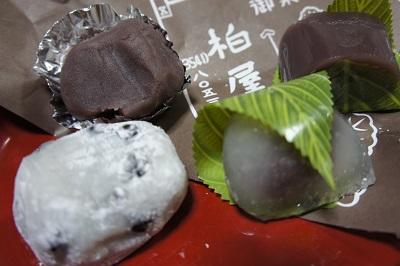
Ginza 6-chome "Soraya" was founded in Ueno Ikenohata in 1884 with the introduction of Eitaro's craftsmen from a tatami shop in and out of Edo Castle. Since the first generation was a member of the Kanto Sorayashu who follow the flow of the dance memorial Buddha, it is derived from the name of the store and the shape in the middle. It is said that the first generation was inspired by the story of Danjuro, the ninth generation who had a friendship, and sold out the middle of the burning skin. Seasonal Japanese sweets are also available, and Soseki Natsume's friends also appear as cats. Prior to 1951, when the 4th Kabukiza Theater was rebuilt, he moved to Ginza Namiki-dori St. in 1949, and made a reservation as "Soraya Monaka" in Ginza (telephone is also Ok), and a shop that is clear by pick-up. Savory burning skin and glossy bean paste...It is said that it will be packed in a plastic bag and will last for a week. (Reference: Takeshobo / Edo Tokyo late Tokugawa shogunate Restoration Gourmet & Shop Shihori) This is "Kuraya Naka" that  men love and women long for.
men love and women long for.
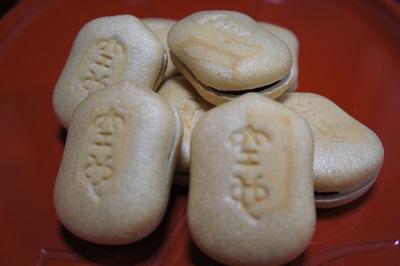
That's all.
[Dharma]
September 25, 2016 12:00
Nihonbashi was the starting point of the five highways built in 1603 (1603). Hiroshige Utagawa "Hundred Famous Views of Edo, Yukiharu Nihonbashi" In Ansei 3-5 years, you can see the bustle of Nihonbashi, a material base. The current Nihonbashi area was completed in 1911. This is an introduction to a long-established Japanese confectionery shop located at the side of Nihonbashi.
"Eitaro Sohonho" has been operating at Nihonbashi since 1857 (1857). During the Ansei era, Eitaro began to bake and sell "Kintsuba" at a small stall in Nihonbashi (from HP). From the monument of "Nihonbashi Originki" on the west side of Nihonbashi Minamizume, you can see the store's dark blue indigo dyeing sunshade goodwill. Recommendations include "Kintsuba", "Easy to eat for Edokko", "Kuroto Daifuku", which features crisp rice cakes, and the original "Amana Sugar", "Tamadare" and "Dorayaki". Edo Japanese sweets of the common people that bloomed from the end of the Tokugawa period to the Meiji period...I feel the influence of Eitaro on this development....。 In the store and in the coffee room, you can enjoy "Anmitsu, sweet taste of honey beans and red rice lunch boxes".
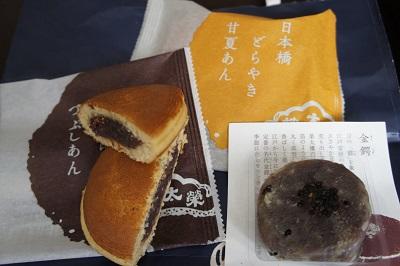
The first son of "Ueno Usagiya" founded in 1913, Nihonbashi 1-chome "Rabbitya" was founded opposite the present Cored Nihonbashi after the war. The shop with a small frontage is a very popular shop full of customers seeking "Dorayaki" from morning to evening. Dorayaki is a Japanese confectionery that stimulates the five senses, where you can see where the shop is at a glance, but rabbits and dorayaki are the taste of putting the top on popular streets.
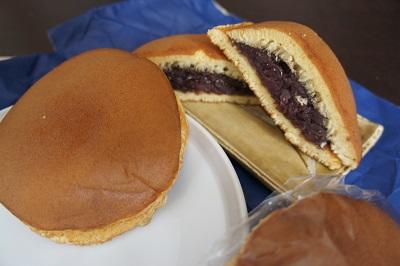
A rabbit
That's all.
[Dharma]
September 23, 2016 14:00
The 4-chome intersection where Chuo-dori and Harumi-dori St. intersect....Not only during the parade, but also during the day of the week and day, the waves and faces of people change greatly. On the four corners, Ginza Mitsukoshi opened in 1930 across Ginza-dori, the second generation "Wako", which was a PX of the army from 1947 to 27, and the second generation "San-Ai Building" (currently a natural energy RICOH advertising tower) and the new design "Shimasu PLZA" at the site of 4-chome PL. The black-and-white appearance after the war remains as it is, and now it has evolved into a 3D landscape. The introduction of a Japanese confectionery shop is a famous restaurant that was founded in Ginza immediately after the war.
Ginza 5-chome "Akebono" Founded in 1948 near the current Ginza 4-chome intersection. In winter, Oshiruko Summer was born as an oyster ice shop. The classic "Chestnut Monaka" is also sold as "Shinguri Monaka" during the Niiguri season. Based on the belief that "the best ingredients are the best skills", he is sending out new Japanese sweets and rice cakes. (From HP) The bean Daifuku (shime bean paste, granulated bean paste) and rice balls (shime bean paste, granulated bean paste) lined up in stores are both rich and profitable tastes.
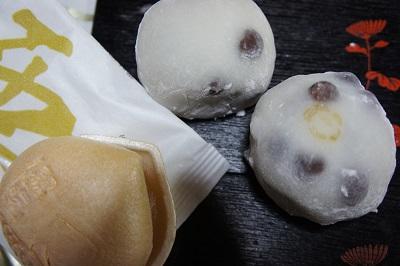
Ginza 5-chome "Kikunoya" In 1890, when the first company opened by digging the Sanju-ma digging, "Kabuki Senbei" was the highlight product. In the third generation after the war, Ginza 5-chome Azuma-dori was the main store, and since 1971, the main store was opened on the first basement floor of Ginza Koa. The representative famous confectionery "Fukiyoro", devised by the second generation in the late Taisho era, is a popular long-selling product. There are about 30 kinds of small dried sweets without compromising the simplicity of local sweets. (From HP) Children compete for cute gold flat sugar and triangular hacks, and there are sachets to accompany bus tours. It is a Japanese confectionery that delights the five senses and bounces conversation. In addition, there are popular fried buns and seasonal Japanese sweets lined up at the store.
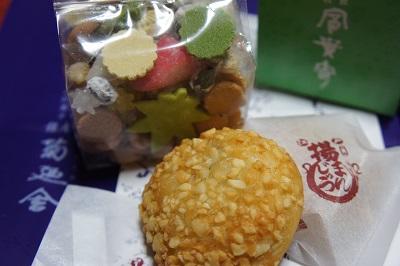
Ginza 4-chome "Ginza Matsuzaki Senbei" was founded in 1804 (1804) Shiba Uryuzaka. The third generation moved the store to Ginza (at that time, Yazaemon-cho) in 1865 and continues to this day. (From the HP) The name of Ginza was officially adopted in 1869 (1869), and "Matsuzaki Senbei" has a true history of Ginza 150 years. It has a deep taste that bites the tile rice cracker "Shami torso" with a color pattern drawn by hand.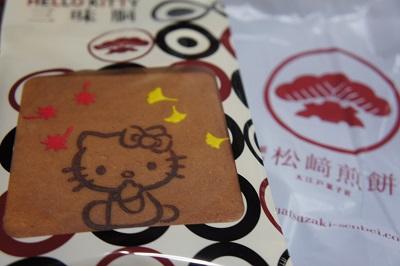
That's all.
![]() Harumi-dori St., you can see the Kabuki Hall of Fame, which was rebuilt with a cultural facility and a high-rise office tower. It is the face of Ginza, which leads Japanese performing arts and culture from the first Kabukiza Theater in 1889 (1889).
Harumi-dori St., you can see the Kabuki Hall of Fame, which was rebuilt with a cultural facility and a high-rise office tower. It is the face of Ginza, which leads Japanese performing arts and culture from the first Kabukiza Theater in 1889 (1889).![]() men love and women long for.
men love and women long for.
